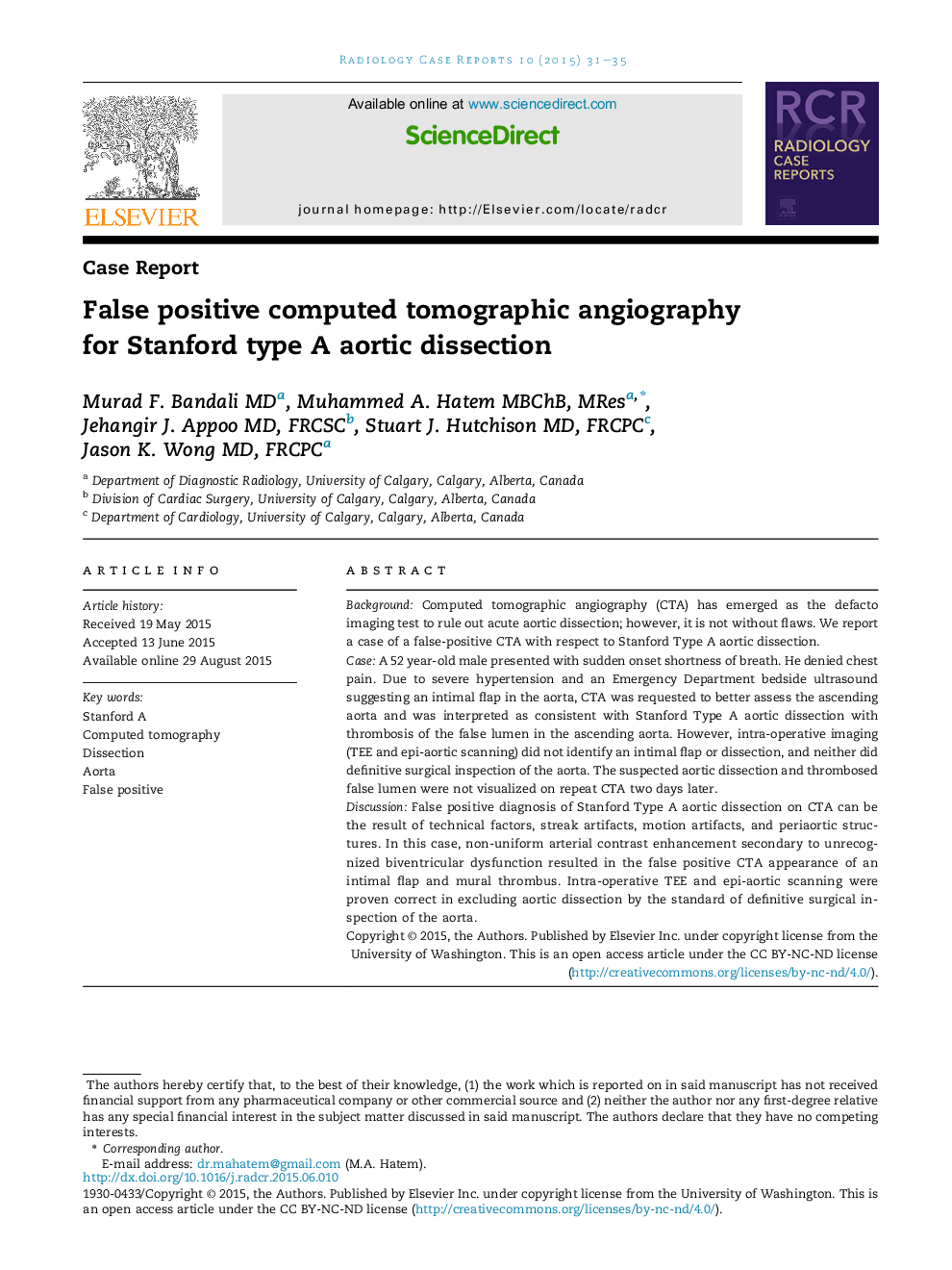| Article ID | Journal | Published Year | Pages | File Type |
|---|---|---|---|---|
| 4247914 | Radiology Case Reports | 2015 | 5 Pages |
BackgroundComputed tomographic angiography (CTA) has emerged as the defacto imaging test to rule out acute aortic dissection; however, it is not without flaws. We report a case of a false-positive CTA with respect to Stanford Type A aortic dissection.CaseA 52 year-old male presented with sudden onset shortness of breath. He denied chest pain. Due to severe hypertension and an Emergency Department bedside ultrasound suggesting an intimal flap in the aorta, CTA was requested to better assess the ascending aorta and was interpreted as consistent with Stanford Type A aortic dissection with thrombosis of the false lumen in the ascending aorta. However, intra-operative imaging (TEE and epi-aortic scanning) did not identify an intimal flap or dissection, and neither did definitive surgical inspection of the aorta. The suspected aortic dissection and thrombosed false lumen were not visualized on repeat CTA two days later.DiscussionFalse positive diagnosis of Stanford Type A aortic dissection on CTA can be the result of technical factors, streak artifacts, motion artifacts, and periaortic structures. In this case, non-uniform arterial contrast enhancement secondary to unrecognized biventricular dysfunction resulted in the false positive CTA appearance of an intimal flap and mural thrombus. Intra-operative TEE and epi-aortic scanning were proven correct in excluding aortic dissection by the standard of definitive surgical inspection of the aorta.
